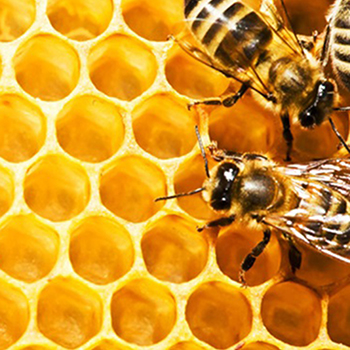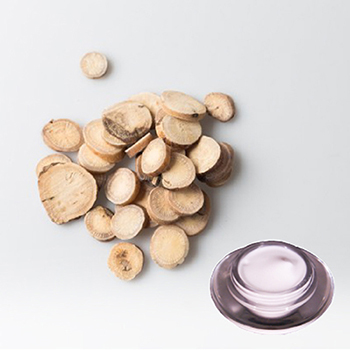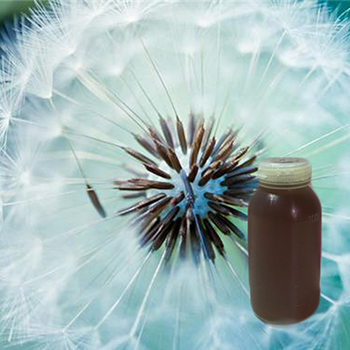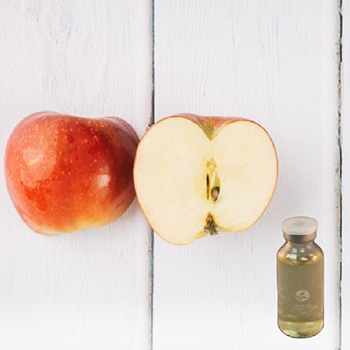目前購物車內沒有商品
Prenylflavonoids and Phloroglucinol Derivatives from Hops (Humulus lupulus):
Abstract:
The ethyl acetate soluble fraction of hops (Humulus lupulus) showed potent inhibitory activity on the production of nitric oxide (NO) induced by a combination of LPS and IFN- . Four known prenylflavonoids (1-4) and a new prenylflavonoid (5), hulupinic acid (6), lupulone (7), and its six new derivatives (8-13) were isolated from the active fraction. The structures were determined on the basis of physiochemical properties and spectroscopic analysis. Their inhibitory activities on the production of NO in macrophage RAW 264.7 cells were examined.
The hop plant (Humulus lupulus L., Cannabinaceae) is used in folk medicine as a tranquilizer or bitter stomachic. The female inflorescences, hop cones, are widely used in the brewing industry to add bitterness and aroma to beer. Recently, some flavanones and chalcones with prenyl or geranyl groups have been identified in hops and beers,1-5 and their biological activities such as the inhibition of bone resorption,6 inhibition of diacylglycerol acyltransferase,7 and antimicrobial activities8 have been discussed. Our previous study has demonstrated the cancer preventive effects of beer consumption on azoxymethane-induced rat colonic carcinogenesis.9 We then focused on the evaluation of cancer preventive effects of beer components by using in vitro studies and found that the inhibitory activity of hops extract on NO production is much stronger than that of beer or malt. Therefore, we have been studying the chemical constituents of hops in an effort to identify the NO production inhibitory agents and found that the active compounds were extracted into the ethyl acetate soluble fraction.10 In the present study, we describe the isolation and structural determination of 13 compounds from the active fraction. Of these compounds, one prenylchalcone (5) and six phloroglucinol derivatives (8-13) are reported as new natural products. We also report on the inhibition of NO production by these compounds.

Hops CAS pellet was extracted as described in the Experimental Section. Through bioactivity-guided fractionation, several NO production inhibitors were purified from the ethyl acetate fraction of hops. Compounds 1-5 were characterized as chalcones. By comparison with the previously published data, compounds 1-4 and 7 were identified as xanthohumol (1), xanthohumol D (2), dihydroxanthohumol (3), xanthohumol B (4), and lupulone (7), respectively. The molecular formula of compound 5 was established as C22H26O7 (m/z 402.16714 [M]+) by HREIMS. Its chemical structure was identified from the HMBC and HMQC data and by comparison with 1H and 13C shift data for xanthohumol. Long-range correlations from H-1' ' ( 2.79, 2.47) of the substituted prenyl group to C-2' ( 163.3), C-3' ( 106.4), and C-4' ( 164.9) were observed in the HMBC spectrum, which provided evidence for the C-3' attachment of the substituted prenyl moiety to the chalcone. Long-range correlation from the 3' '-OCH3 protons ( 3.16) to C-3' ' ( 76.8) provided evidence for the substitution of methoxy at C-3' ' of the prenyl group. Although compound 5 was identified to be a new component from hops, it is likely to be an oxidation product of xanthohumol at the double-bond position of the prenyl group.
The molecular formula of compound 6 was established as C15H20O4 (m/z 264.13588 [M]+) by HREIMS. The 13C NMR spectrum exhibited only eight carbon signals, which indicated the possibility of a symmetrical structure. Analysis of the DEPT spectrum showed the presence of two methyl, one methylene, one methine, and four quaternary carbon signals. Extensive analysis of the 1H and 13C NMR spectra together with HMBC spectra indicated the presence of two prenyl (3-methylbut-2-enyl) groups in a symmetrical environment. Long-range correlations in the prenyl group were observed in the HMBC spectrum between the following: H-5' ( 1.54) to C-2' ( 118.9), C-3' ( 136.6), and C-4' ( 26.1); H-4' ( 1.59) to C-2' ( 118.9), C-3' ( 136.6), and C-5' ( 17.8); H-2' ( 4.81) to C-1' ( 33.5), C-4' ( 26.1), and C-5' ( 17.8); H-1' ( 2.31) to C-2' ( 118.9), C-3' ( 136.6), and C-4' ( 26.1, weak). The connections of prenyl groups were confirmed by the observation of long-range couplings from H-1' ( 2.31) to C-1 ( 200.0, C=O), C-2 ( 55.4), and C-1' ' ( 33.5, for another prenyl group). Compound 6 is thus hulupinic acid.
Compounds 8-13 were identified as new derivatives of lupulone (7), a main constituent from hops. The molecular formula of compound 8 was determined as C26H36O4 (m/z412.26134 [M]+) by HREIMS. In the IR spectrum, absorption bands attributable to carboxyl (C=O, 1660 cm-1) and hydroxyl (-OH, 3447 cm-1) groups were observed. The 13C NMR spectrum exhibited 26 carbon signals, which were classified into eight methyl, three methylene, and five methine groups and 10 quaternary carbons by analysis of the DEPT spectra. The 1H NMR spectrum displayed 17 proton signals. The connectivity of proton and carbon atoms was confirmed by the HMQC spectrum. Extensive analysis of the 1H and 13C NMR spectra together with HMBC spectra indicated the presence of one 3-methylbutyryl and two prenyl (3-methylbut-2-enyl) groups. Long-range correlations were observed in the HMBC spectrum between the following: 4a-(3-methylbut-2-enyl) [H-4' ( 1.47) to C-2' ( 117.3), C-3' ( 136.8), and C-5' ( 25.9); H-5' ( 1.62) to C-2' ( 117.3), C-3' ( 136.8), and C-4' ( 17.7); H-2' ( 4.89) to C-1' ( 44.5), C-4' ( 17.7), and C-5' ( 25.9); H-1' ( 2.37 2.56) to C-2' ( 117.3) and C-3' ( 136.8)], 6-(3-methylbutyryl) [H-4' ' ( 0.97) to C-2' ' ( 48.0) and C-3' ' ( 25.7); H-5' ' ( 0.99) to C-2' ' ( 48.0) and C-3' ' ( 25.7); H-2' ' ( 2.88) to C-1' ' ( 202.4), C-4' ' ( 22.7), and C-5' ' ( 22.8)], 8-(3-methylbut-2-enyl) [H-4' '' ( 1.75) to C-2' '' ( 121.9), C-3' '' ( 131.7), and C-5' '' ( 25.7); H-5' '' ( 1.68) to C-2' '' ( 121.9), C-3' '' ( 131.7), and C-4' '' ( 17.9); H-2' '' ( 5.13) to C-1' '' ( 21.2), C-4' '' ( 17.9), and C-5' '' ( 25.7); H-1' '' ( 3.07, 3.15) to C-2' '' ( 121.9) and C-3' '' ( 131.7)]. As shown in Figure 1, the partial structure A is supported by observation of long-range couplings from H-1' ( 2.37, 2.56) to C-4a ( 52.7), C-5 ( 193.6), C-4 ( 123.4), and C-8a ( 167.8) in the HMBC spectrum. The partial structure B is supported by observation of long-range couplings from H-3 ( 5.75) to C-2 ( 82.2) and C-4a ( 52.7) and from H-4 ( 6.24) to C-4a ( 52.7) and C-8a ( 167.8). The partial structure C is supported by observation of long-range couplings from H-2' ' ( 2.88) to C-6 ( 115.5). The partial structure D is supported by observation of long-range couplings from H-1' '' ( 3.07, 3.15) to C-7 ( 190.1), C-8 ( 108.5), and C-8a ( 167.8). The two partial structures C and D could be connected by observation of long-range couplings from 7-OH ( 19.04) to C-6 ( 115.5) and C-1' ' ( 202.4). The connection of partial structures A, B, and D could be confirmed by the presence of the same carbon atoms C-4, C-4a, and C-8a in different partial structures. Because of the ambiguities whether the attachment of the heterocyclic ring should be reversed, an additional NOESY experiment was performed. Correlations were observed between H-4 ( 6.24) and H-1' ( 2.37 2.56), which confirmed the structure of compound 8 (4a-C-, 8a-O-) and eliminated the alternative substructure (4a-O-, 8a-C-).

Figure 1 HMBC correlations of compound 8.
The molecular formula of compound 9 was determined as C25H34O4 (m/z 398.24569 [M]+) by HREIMS. The 13C NMR spectrum showed 25 carbon signals, containing eight methyl, two methylene (of which three were in compound 8), five methine groups, and 10 quaternary carbons. The 1H NMR spectrum displayed 16 proton signals, one proton less than that of compound 8. The UV, IR, and 1H and 13C NMR spectra of compound 9 were nearly identical to those of compound 8 (Table 3), except for the loss of H-2' ' and C-2' ' signals and chemical shifts of signals for 1' ', 3' ', 4' ', and 5' ' observed in the 1H and 13C NMR spectra. Extensive analysis of the 1H and 13C NMR spectra together with HMQC and HMBC data indicated that it has similar partial structures A, B, and D. The partial structure F (Figure 2, right) is supported by observation of long-range couplings from H-4' ' ( 1.11) to C-1' ' ( 207.3) and C-3' ' ( 35.3); from H-5' ' ( 1.18) to C-1' ' ( 207.3) and C-3' ' ( 35.3); and from H-3' ' ( 3.89) to C-1' ' ( 207.3), C-4' ' ( 18.5), and C-5' ' ( 19.3). In the NOESY experiment, correlations were observed between H-4 ( 6.25) and H-1' ( 2.38 2.56), which confirmed that the attachment of the heterocyclic ring in compound 9 should not be reversed.

Figure 2 HMBC correlations of compounds 9 and 11.
The problematic substances of hops known up to now mainly derive fromfour sectors:
l Hops are treated with additives, for example for conservation, processing or isomerisation.
l Hops are contaminated by environmental pollutions like heavy metals, radionuclides and other air pollutions.
l Hops accumulate nitrates, a fact which is supported by fertilization.
l Residues of insecticides, fungicides and herbicides result from chemical plant protection.
Table 1: Theoretically calculated effects on beer or spent hops resulting from the use of hops contaminated with the max. tolerable level of pesticides demonstrated by the examples of endosulphane and cypermethrine
(all figures in ppm)
(PHmV = German regulation on max. tolerable levels of pesticides)
|
|
|
|||||||||||||||||||||||||||||||||||||||||||||||||
Isomerising hop extracts or even hop powders, but all procedures apply alkaline or alkaline earth salts in the alkaline sphere at temperatures around 100°C. The aim of these procedures is the conversion of alpha to iso-alpha-acids. However, it has not yet been investigated whether besides this desired reaction also other changes are possible. Furthermore the question arises, what reactions, if any, take place besides an isomerisation, in case of hop powder is treated with Ca or Mg salts at 100 to 120 °C (8, 9). Further to the possibility of qualitatively doubtful reactions with hop oils, hop bitter substances and tannins, the danger exists that completely uncontrolled and unknown reactions take place, which might have physiologically undesired consequences. When setting the saving of raw materials as an objective, one should not forget to balance the effects of the technological steps as far as possible.
Every chemical reaction within a complex natural substance may cause more or less harmless side reactions of unknown chemism. Therefore the processing of natural substances could strictly be regarded from the following point of view:
The less discernible reactions take place, the lower the danger of unknown and possibly undesired reactions is. The most careful kind of processing thus often is also the safest.
var SA_ID="acspix;acspix";

FIG. 1. The chemical structure of 8-PN.
Chemicals. Racemic 8-PN was isolated from hops and purified by semipreparative HPLC. Purity was determined to be >98% based on HPLC and LC-MS analysis. All other chemicals were purchased from Sigma-Aldrich (St. Louis, MO). HPLC-grade (Optima) solvents were purchased from Fisher Scientific Co. (Pittsburgh, PA). Authentic standards of etabolites 5,4'-dihydroxy-2'',2''-dimethylpyrano-[7,8:6'',5'']flavanone (M5), 5,7,4'-trihydroxy-8-(2-hydroxy-3-methylbut-3-enyl)flavanone (M7), and5,4'-dihydroxy-[2''-(1-hydroxy-1-methylethyl)dihydrofurano]-[5'',4'':7,8]flavanone (M10) were isolated from the leaves of Macaranga conifera as described by Jang et al.
˙Resinous bitter principles ( 15-20%).
These include alpha and beta acids. The alpha acids include humulon, co-humulon, and ad-humulon; the beta acids include lupulon, co-lupulon, and ad-lupulon. On storage the bitter acids convert in part to isovaleric acid. Oxidation products of the a and b-acids - xanthohumol (a chalcone) and isoxanthohumol and 8-prenylnaringenin (8PN) and 6-prenylnaringenin (6PN) and also a compound unique to one American variety of hops - 4-0-methylchalcones are the topics of current research into new medicinal uses for hops.
˙Flavonoids
Mainly glycosides of kaempferol and quercetin, but also astragalin and rutin (the leaves in particular).
˙Phenolic acids
Including ferulic and chlorogenic acids
˙ Tannins 2-4%
˙ Oestrogenic substances
The structure of these substances is to date undetermined .
Weiss (1988) states 100g hops contain between 30,000 and 300,000 IU oestrogen.
˙Gamma-linoleic acid (GLA) - particularly in hop seeds.
˙Asparagine
Nutritional constituents:
Vitamin B complex.
Minerals: magnesium, zinc, copper and traces of iodine, manganese, iron, sodium, fluorine, chlorine, and lead.
Hop vines have approx 42% cellulose and 26% lignin.(Leung, 1980) Hops also contain:-
* 13-24% protein
* 12-14% pectins
* 3-4% fructose/glucose
Medicinal Actions:
|
Medicinal Action |
Contributing constituent/s |
|
Sedative |
Resinous bitter principles |
|
Soporific/hypnotic |
Resinous bitter principles |
|
Antispasmodic |
Hop compound- eg linalool, limonene, |
|
Bitter - digestive stimulant |
Bitter principles |
|
Diuretic |
Asparagine |
|
Antimicrobial |
Resinous Bitter principles - including. humulon and lupulon. |
|
Emmenagogue |
Oestrogenic substances |
|
Galactagogue |
Oestrogenic substances |
|
Anaphrodisiac |
Oestrogenic substances |
|
Antioxidant |
Xanthohumol, iso-xanthohumol quercetin |
|
Astringent |
tannins |
Inglis (2001) notes that hop oils also contain a range of organosulphur compounds.
These may well be worthy of further research as to their possible antibiotic qualities.






